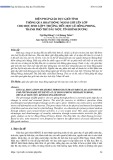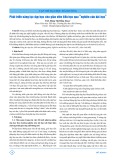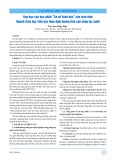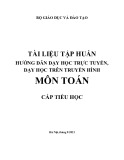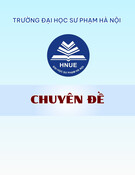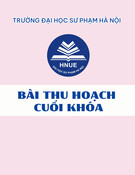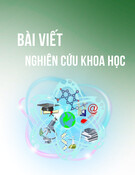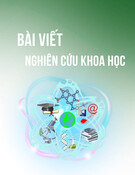
119
HNUE JOURNAL OF SCIENCE
Educational Sciences 2024, Volume 69, Issue 4, pp. 119-128
This paper is available online at https://hnuejs.edu.vn
DOI: 10.18173/2354-1075.2024-0169
INSTRUCTION BASED ON THE VARK LEARNING STYLES
OF PRIMARY STUDENTS IN SCIENCE
Pham Viet Quynh
Faculty of Education, Hanoi Metropolitan University, Hanoi city, Vietnam
Corresponding author: Pham Viet Quynh, e-mail: pvquynh@daihocthudo.edu.vn
Received July 15, 2024. Revised August 2, 2024. Accepted September 10, 2024.
Abstract. VARK is a learning style model developed by Neil Fleming in the 1980s. VARK
represents the four main learning styles: Visual, Aural, Read/Write, and Kinesthetic. The
VARK model provides a deep understanding of different learning preferences, consequently
supporting both learners and educators within the teaching-learning process. This contributes
to the goal of developing student competencies in the Science subject, as per the 2018 general
education curriculum. This research is based on the theoretical analysis of learning styles,
and the science curriculum, to propose a science teaching and learning process that addresses
the various learning styles of elementary school students, with specific illustrative examples.
At the same time, the research conducts pedagogical experiments to initially evaluate the
effectiveness and feasibility of the proposed process. The flexible integration of VARK-
based learning activities will create a diverse, engaging, and stimulating learning
environment in the teaching and learning of the Science subject, which will encourage active
student participation and contribute to the enhancement of scientific competencies for
primary school students.
Keywords: learning style, VARK, Science, Primary school.
1. Introduction
Since 1987, intending to improve teaching strategies for instructors and help students learn
more effectively, Fleming developed the VARK (The VARK Inventory) to explore students'
learning preferences [1]. VARK is an acronym for the keywords Visual, Aural, Read/Write, and
Kinesthetic. Each keyword corresponds to a respective learning style - the visual, auditory,
reading/writing, and tactile/kinesthetic learning styles. In addition to these four distinct learning
styles, Fleming also suggested that due to the diverse nature of life experiences, more than 40%
to 55-60% of learners possess multiple learning preferences [1, 2]. An individual's preference for
one of the learning styles does not mean the other three styles are non-existent for that person.
The VARK model plays a crucial role in the teaching and learning process [1]. VARK helps
identify the primary learning styles (Visual, Aural, Read/Write, Kinesthetic) of each learner [3].
Understanding the learning styles of students is an important foundation for teachers to design
appropriate learning activities and teaching methods [4]. Based on the VARK model, teachers
can apply diverse teaching strategies and methods to cater to the needs of different learning styles.
For example: Using images and videos (Visual), providing oral explanations (Aural), having
students read materials and take notes (Read/Write), and organizing hands-on activities
(Kinesthetic) [4]. The recognition and application of the VARK model in teaching and learning








